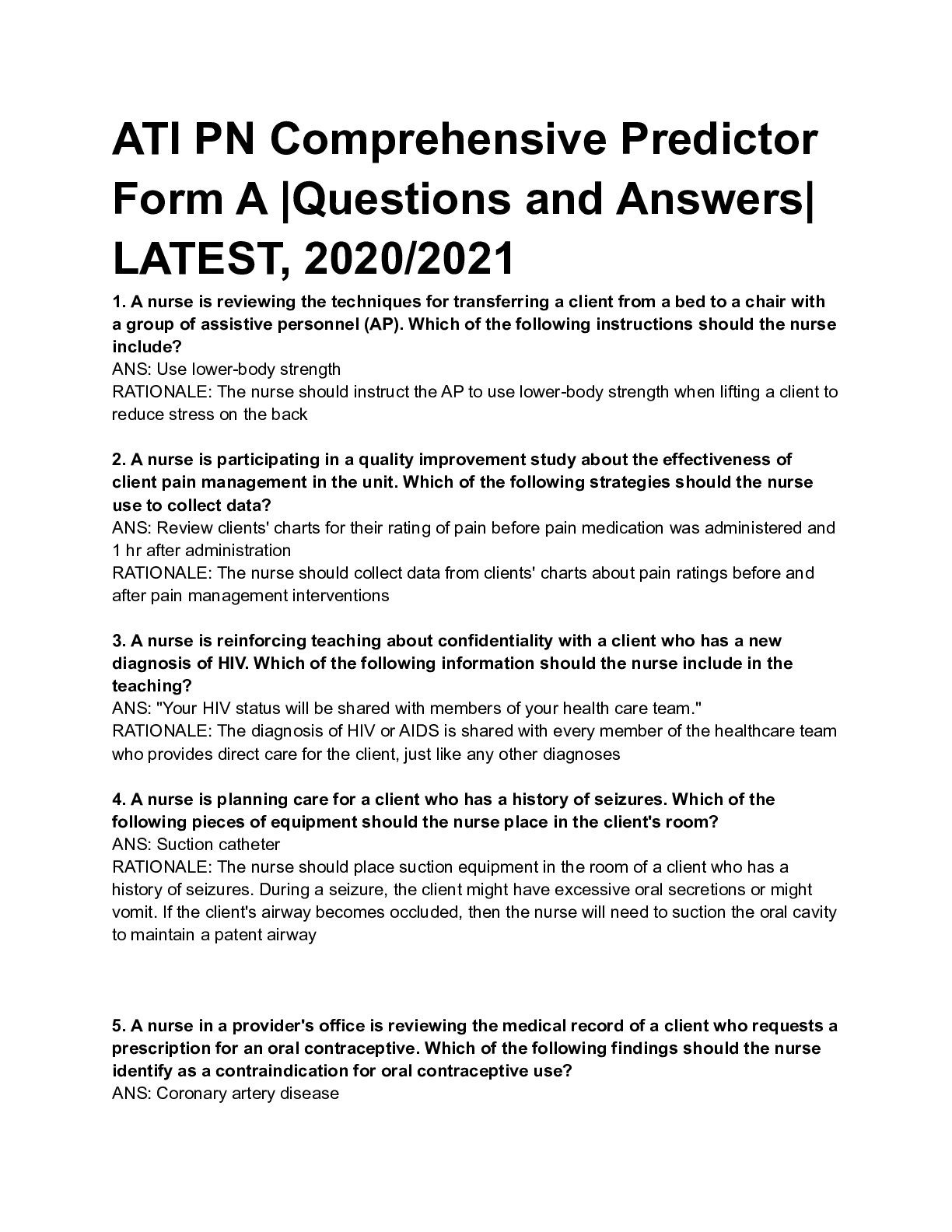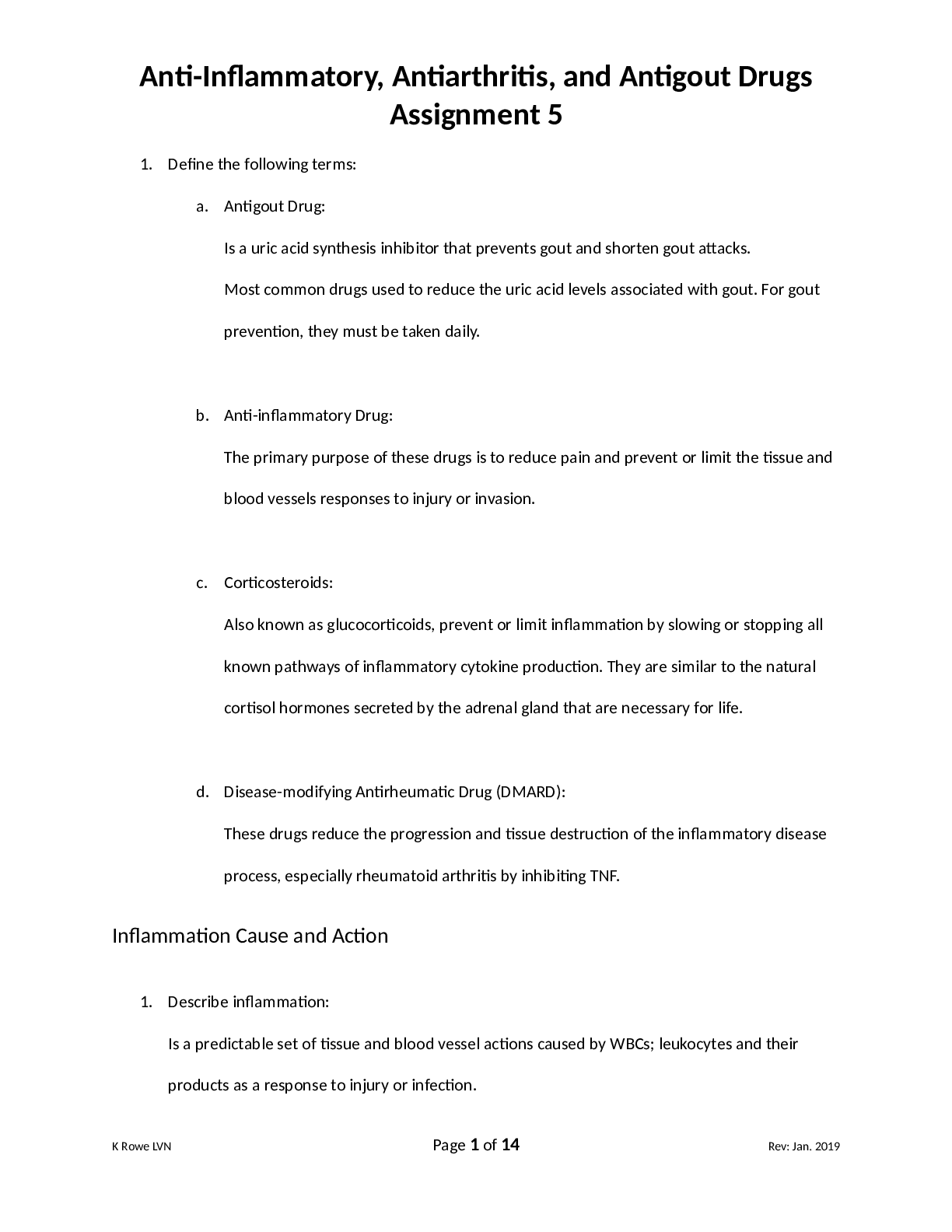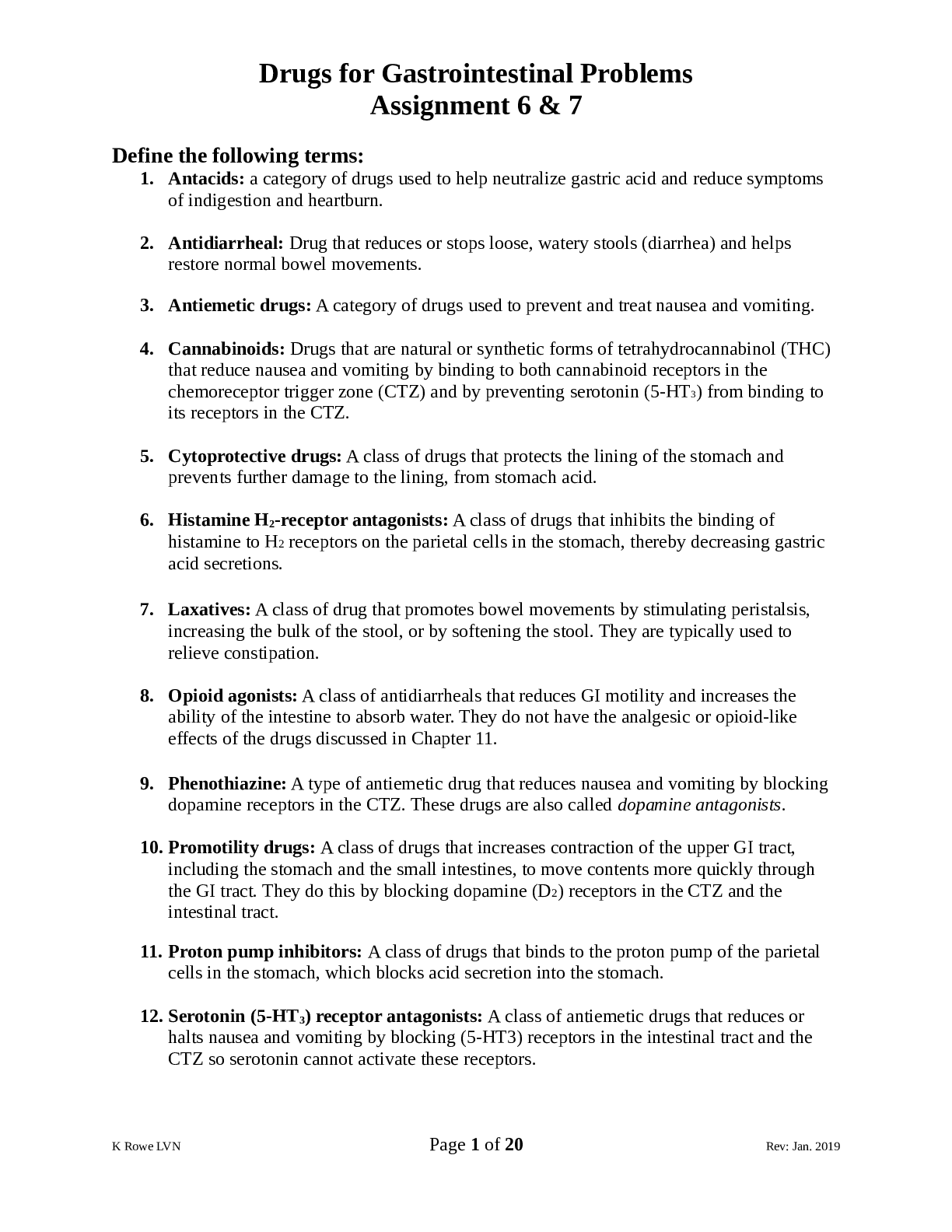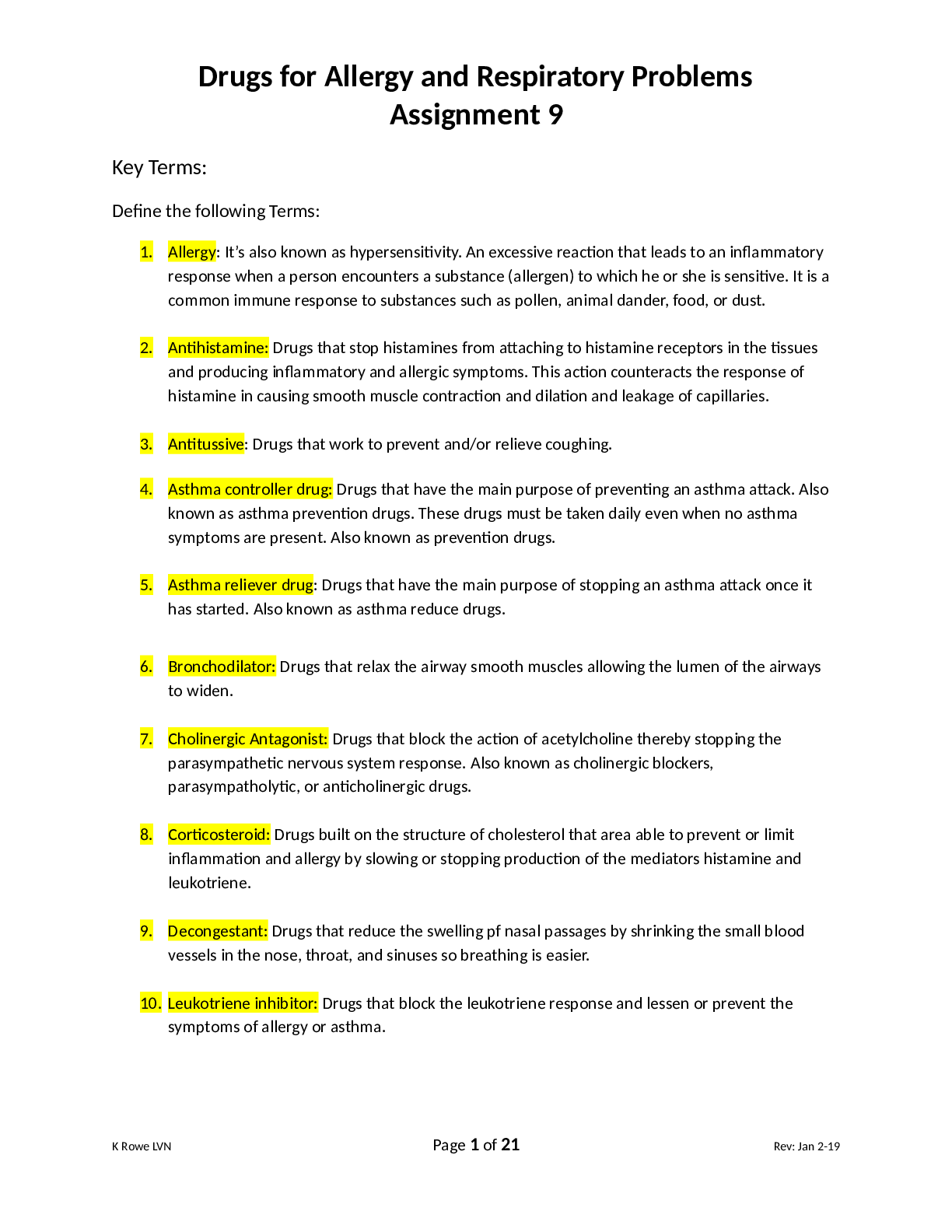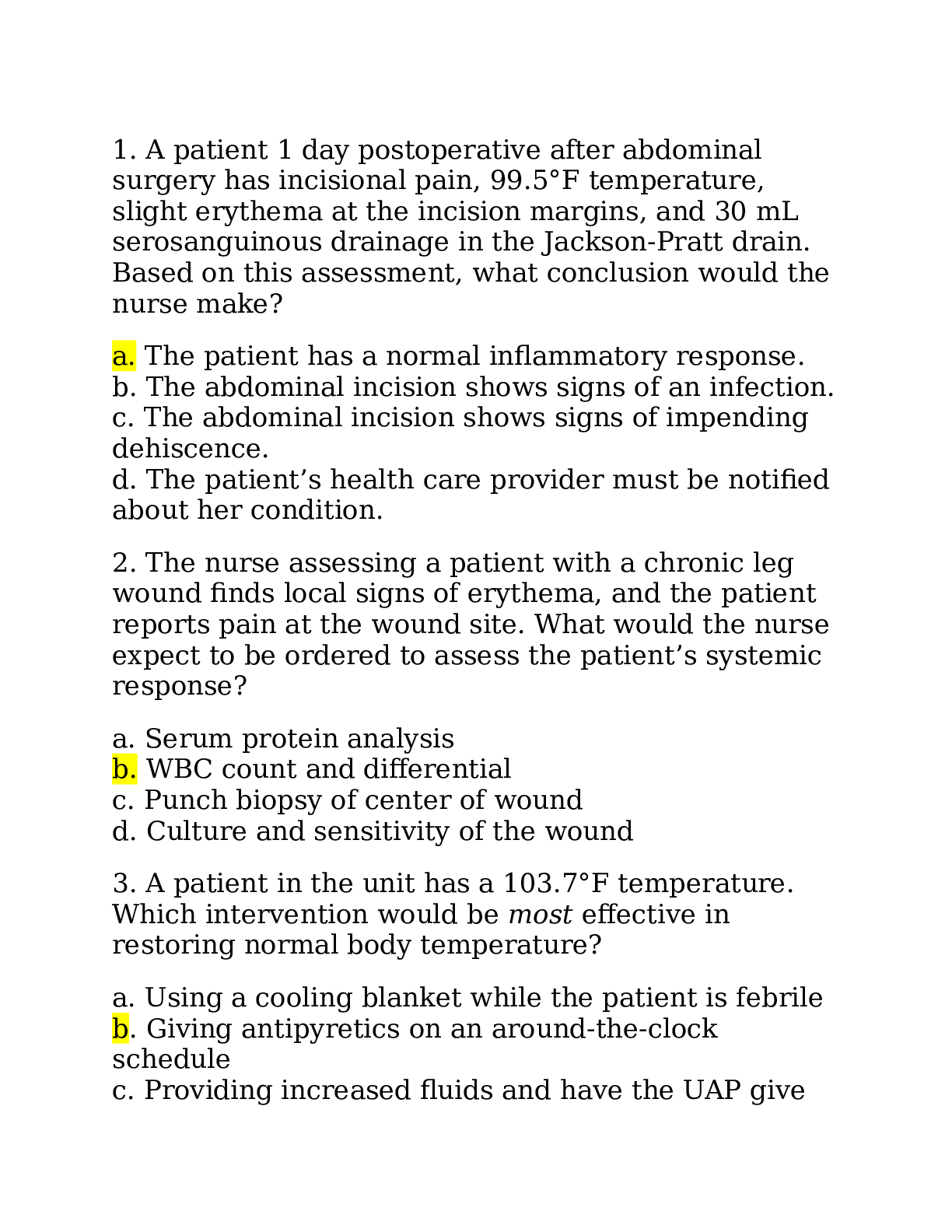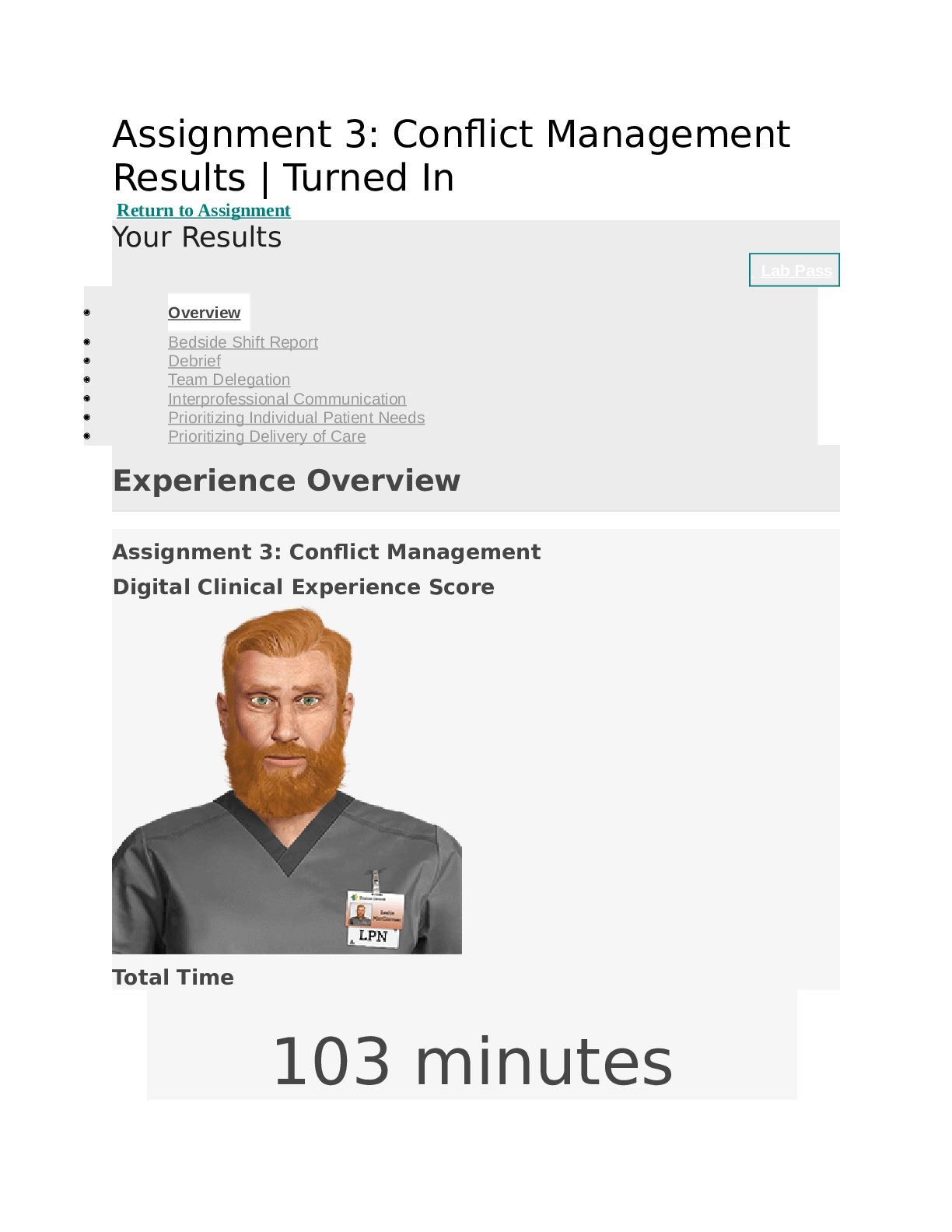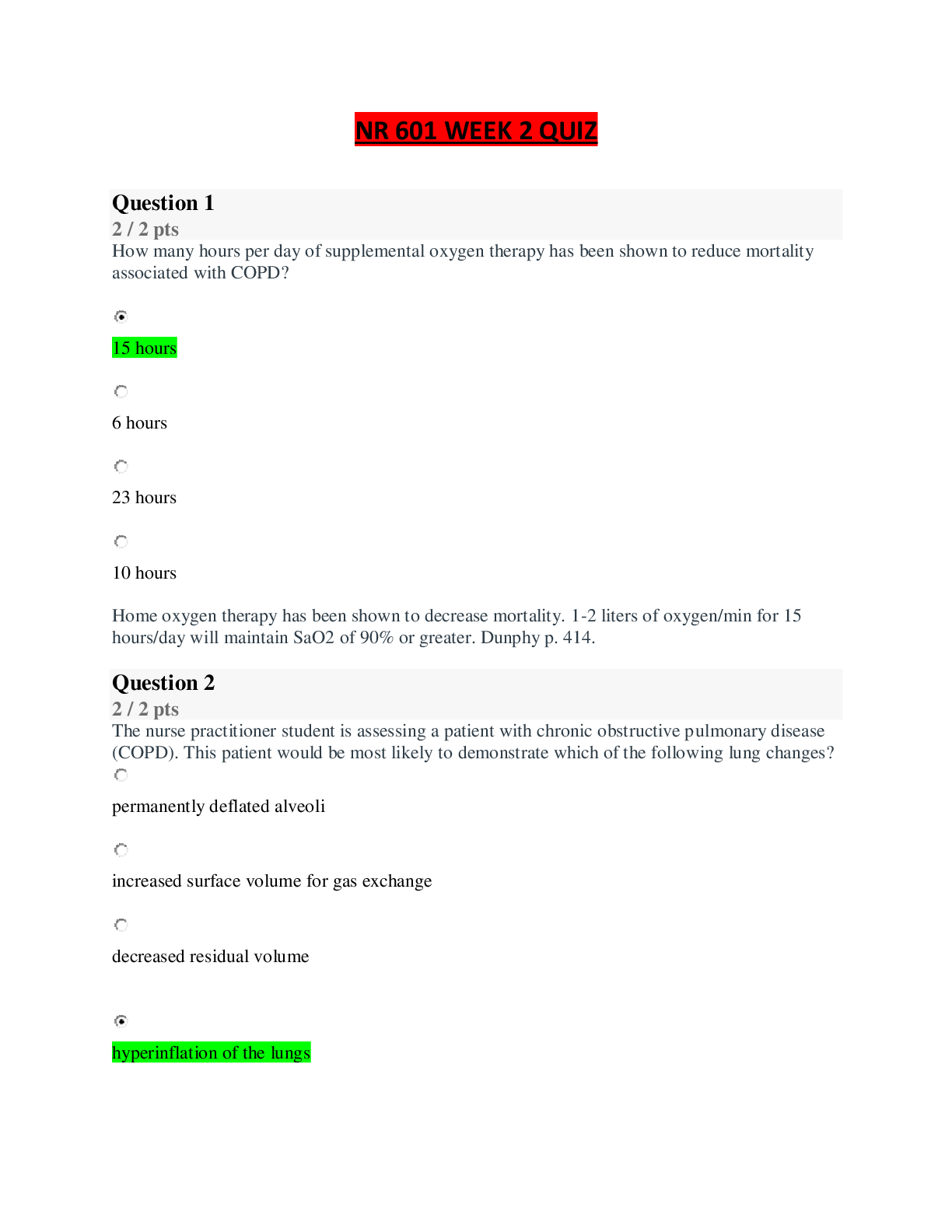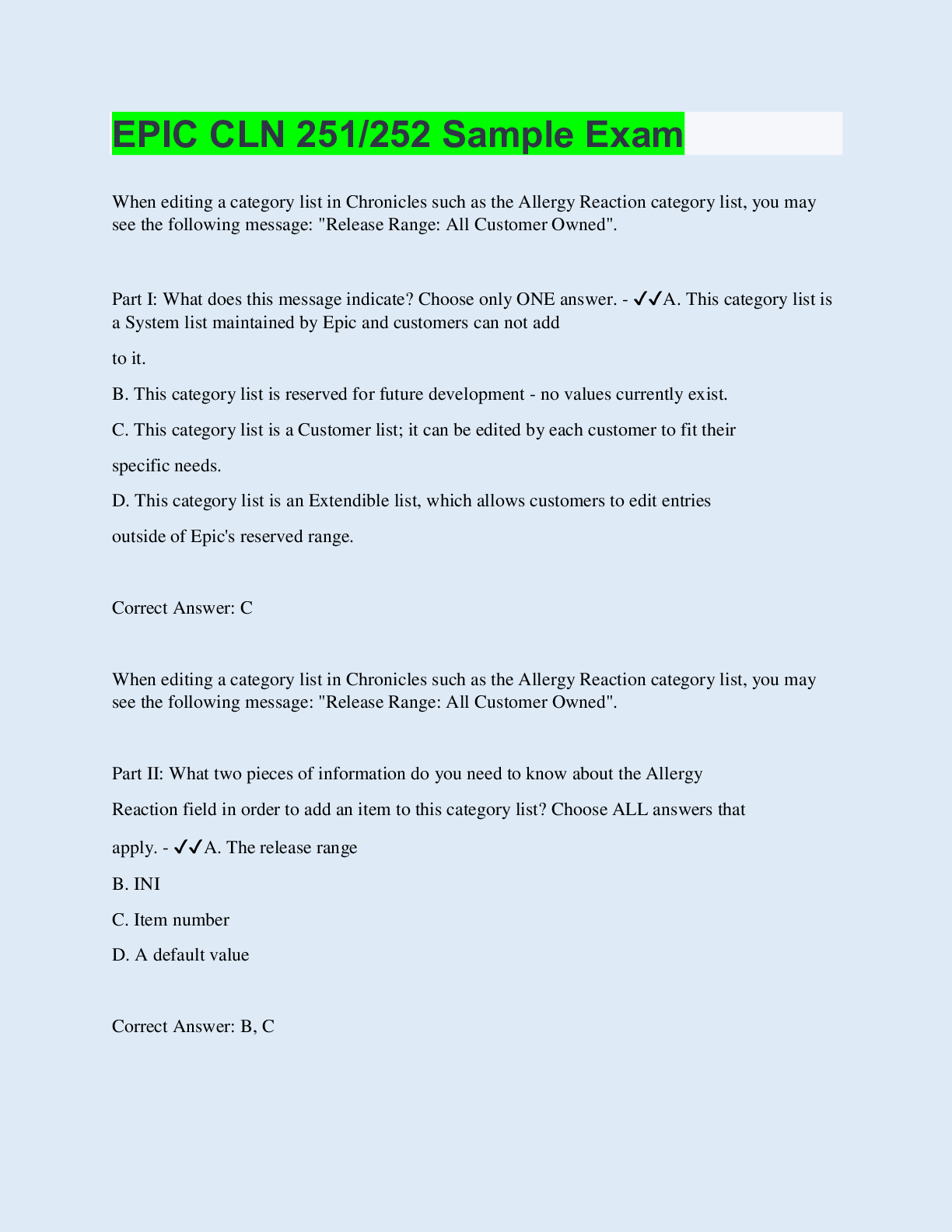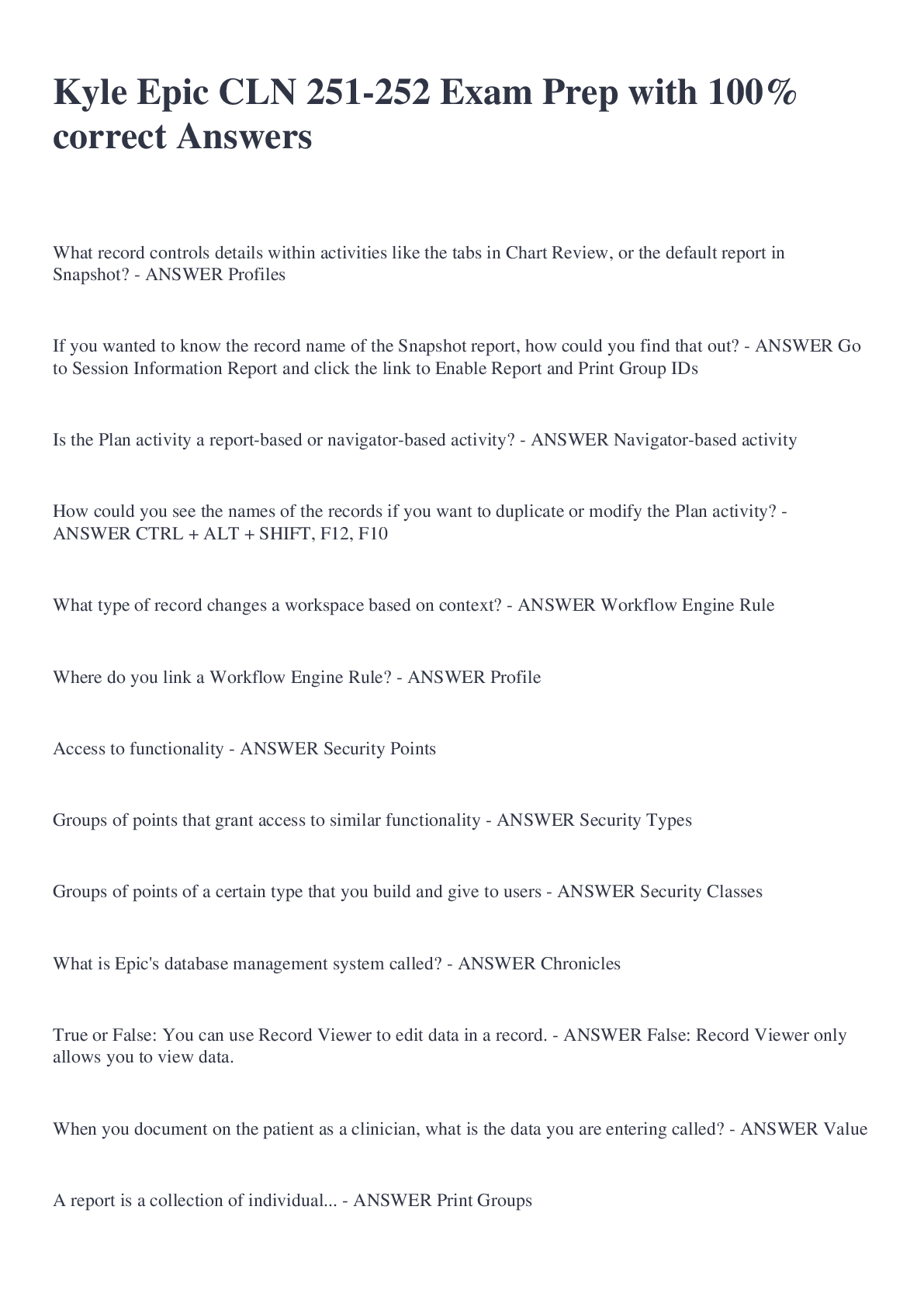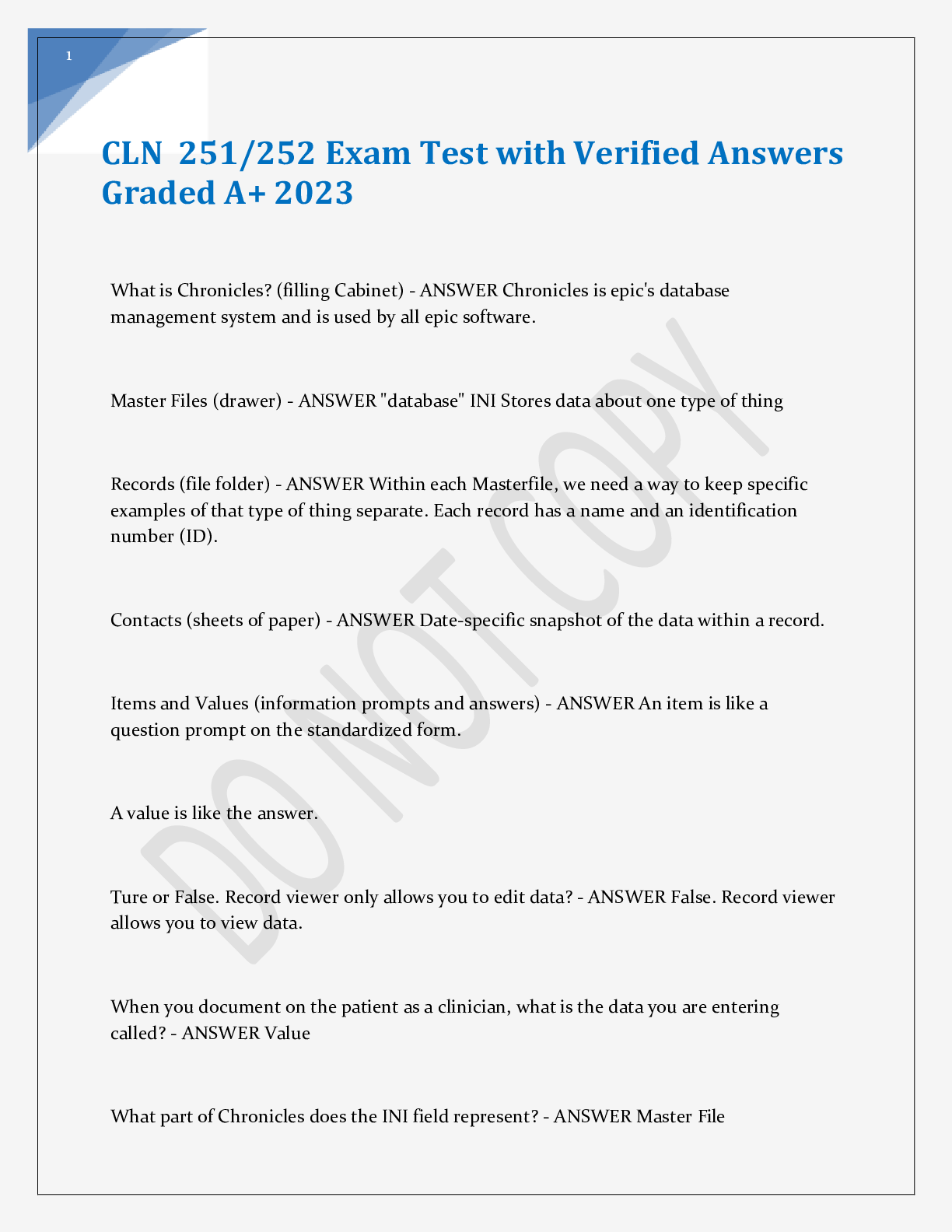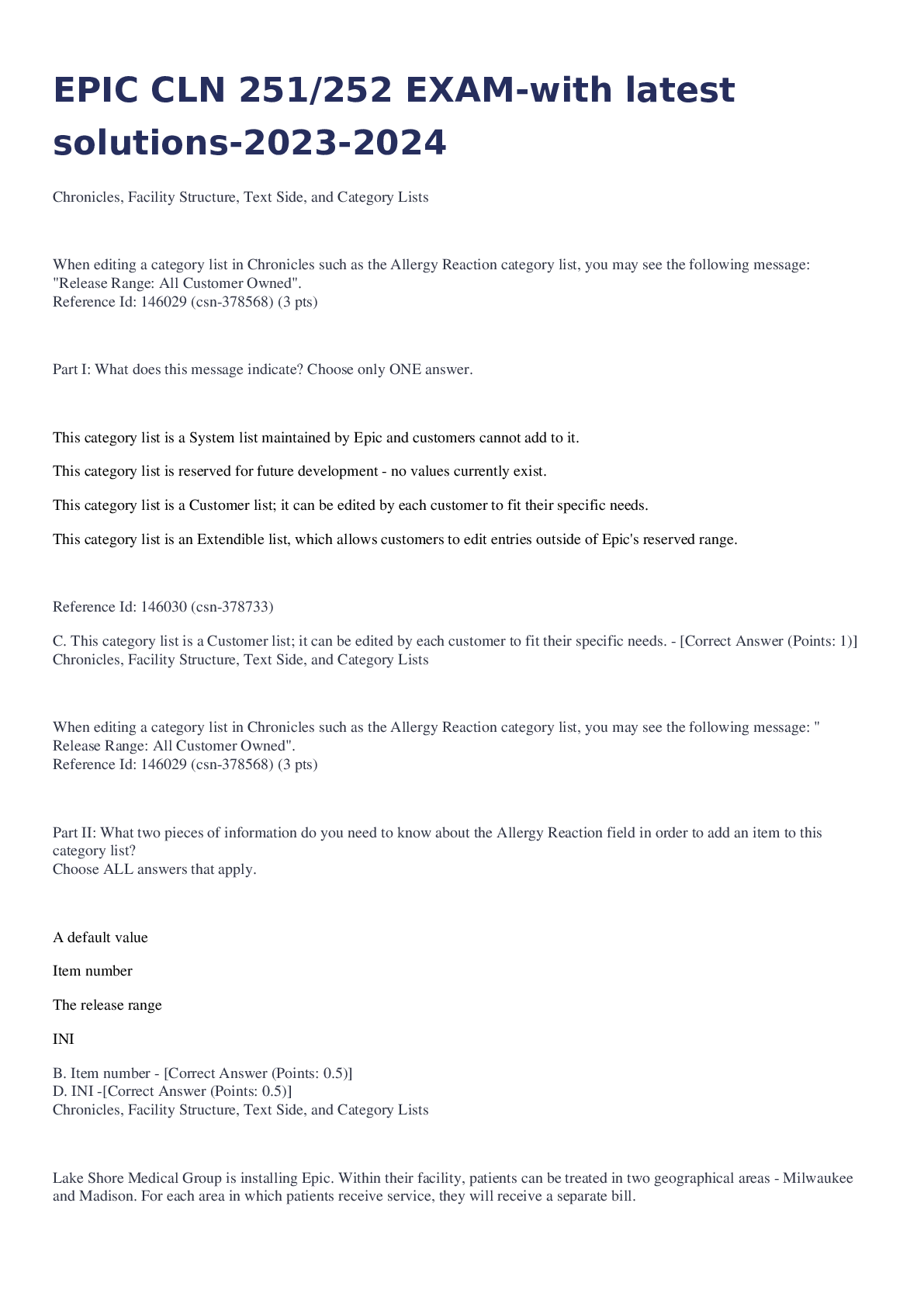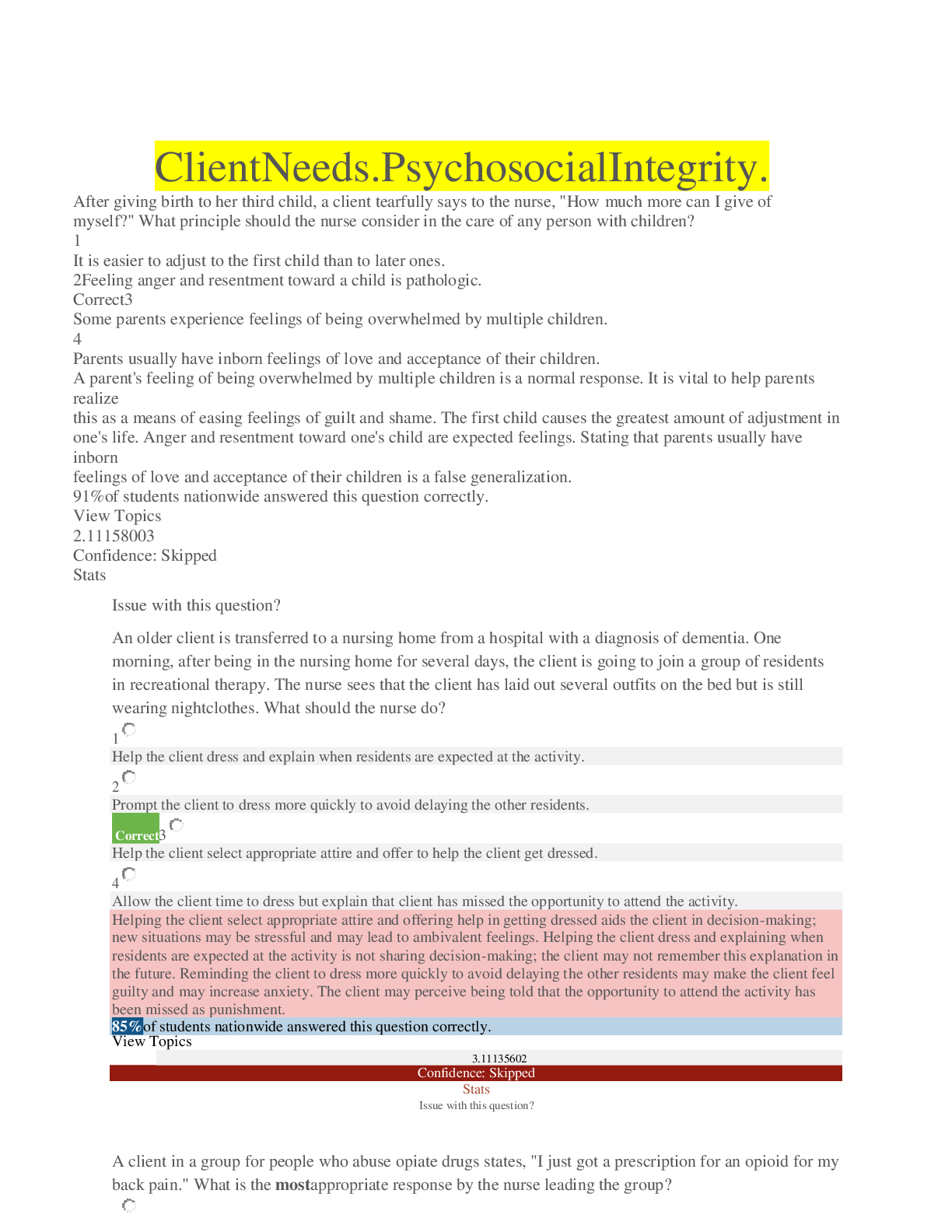NR 601 Week 2 Quiz-Questions and Answers
Document Content and Description Below
NR 601 Week 2 Quiz-Questions and Answers 1. The cytochrome P system involves enzymes that are generally a. Inhibited by drugs b. Induced by drugs c. Inhibited or induced by drugs d. Associate... d with decreased liver perfusion 2. The percentage of the FVC expired in one second A. FEV1 B. FVC C. FEV1/FVC ratio D. TLC total Lung capacity 3. The best recommendation for a patient who states they have no equipment to exercise would be A. Sign a contract for a year’s membership to a local gym B. Borrow free weights from grandchildren C. Have a personal trainer come to the home three times a week D. Improvise with recommended objects at home that can be used. 4. A common auscultatory finding in advanced CHF is A. Systolic ejection murmur B. S3 Gallop rhythm C. Friction rub D. Bradycardia 5. Patient education for the COPD patient is essential. The nurse practitioner knows that COPD education includes all except A. Smoking cessation B. Daily exercise C. Healthy diet D. Increased risk for diabetes 6. What is the most common valvular heart disease in the older adult? A. Aortic regurgitation B. Aortic stenosis C. Mitral regurgitation D. Mitral stenosis 7. Polypharmacy is best described as taking i. More than 9 meds per day ii. More than 5 meds per day iii. Even a single meds if not a clear indication for its use iv. When a drug is given to treat a side-effect of another drug 8. Aortic regurgitation requires medical treatment for early signs of CHF with A. Beta blockers B. ACE inhibitors C. Surgery D. Hospitalization 9. Preferred amount of exercise for older adults is: A. 10 minutes of physical activity each morning B. 30 minutes per day of aerobic activity five times a week 2 C. Any increase in physical activity over a sedentary lifestyle D. 60 minutes per day that includes 30 minutes of aerobic activity and 30 minutes of weight training five times a week. 10. The goal of COPD pharmacological therapy include all except A. Reduce frequency and severity of exacerbations B. Reverse obstruction C. Improve exercise tolerance D. Decrease mortality 11. The nurse practitioner student knows that gold standard for diagnosis of COPD is a. Irreversible airflow limitation b. Dypnea, chronic cough and cough sputum production c. Decreased breath sounds, wheezes at the lung bases d. Spirometry 12. Which obstructive lung disease is classified as reversible? a. Asthma b. Chronic bronchitis c. Emphysema d. COPD 13. The volume of air a patient is able to exhale for the total duration of the test during maximal effort a. FEV1 b. FVC c. FEV1/FVC ratio d. TLC total lung capacity 14. Atypical presentation of disease in the elderly is reflected by all the following except a. Infection without fever b. Depression without dysphoric mood c. Myocardial infarction with chest pain and diaphoresis d. Cardiac manifestations of thyroid disease 15. A 72-year old woman and her husband are on a cross-country driving vacation. After a long day of driving, they stop for dinner. Midway through the meal, the woman becomes very short of breath, with chest pain and a feeling of panic. Which of the following problem is most likely. A. Pulmonary edema B. Heart failure C. Pulmonary embolism D. Pneumonia 16. J.M is a 68-year old man who presents to your primary care practice for a physical. J.M. has had type 2 diabetes mellitus for 5 years, diet controlled. His BMI is 32. Smoker, 10 cigarettes a day for 20 years. He denies any other medical problem. Family history include CAD, CABGx4 for father, now deceased, CHF, type II DM, HTN for mother. According to the AHA/ACC guidelines, what stage is J.M.? A. Stage A B. Stage B C. Stage C D. Stage D 17. The best evidence rating drugs to consider in a post MI patients includes a. ASA, ACE/ABR, beta-blocker, aldosterone blockade b. ACE, ABR, calcium channel blocker, ASA 3 c. Long acting nitrates, warfarin, ACE and ARB d. ASA, Clopidogrel, nitrates 18. All of the following statements are true about laboratory values in older adults except a. Reference ranges are preferable b. Abnormal findings are often due to physiological aging c. Normal ranges may not be applicable for older adults d. Reference values are not necessarily acceptable values 19. The volume of air in the lungs at maximal inflation a. FEV1 b. FVC c. FEV1/FVC ration d. TLC total lung capacity 20. The major impact of the physiological changes that occur with aging is a. Reduced physiological reserve b. Reduced homeostatic mechanism c. Impaired immunological response d. All of the above. 21. You have completed the first follow up visit for a new COPD patient who is in stable condition. The patient asks how often he needs to follow up for COPD. The NP states stable COPD patients should return for follow up evaluation a. Monthly b. 2 month c. Every 3-6 months d. Yearly 22. A 60-year old women with 30 pack year history, presents to your primary care practice for evaluation of a persistent daily cough with increased sputum production, worse in the morning, occurring in the past three months. She tells you, “ I have the same thing, year after year.” Which of the following choices would you consider strongly in your critical thinking process? a. Seasonal allergies b. Acute bronchitis c. Bronchial asthma d. Chronic bronchitis 23. MG, a 60 year old female presents with complaints of her “ heart flipping in her chest” The NP wants to evaluate for arrhythmia. The NP knows that the cornerstone for arrhythmia evaluation includes A. History B. Physical examination C. Electrocardiogram D. All of the above 24. Functional abilities are best assessed by a. Self-reported of function b. Observed assessment of function c. A comprehensive head to toe examination d. Family report of function 25. The aging process causes what normal physiological changes in the heart? a. The heart valve increases and becomes rigid, secondary to fibrosis and sclerosis b. Cardiology occurs along with prolapse of the mitral valve and regurgitation c. Dilation of the right ventricle occurs with sclerosis of pulmonic and tricuspid valve d. Hypertrophy of the right ventricle. Powered by TCPDF (www.tcpdf.org) [Show More]
Last updated: 1 year ago
Preview 1 out of 8 pages

Also available in bundle (2)
.png)
NR 601 Week 1-Week 8 Course Bundle
NR 601 Week 1-Week 8 Course Bundle
By Amanda Rosales 3 years ago
$75
110

NR 601 Week 2 Bundle: COPD Case Study, Weekly Clinical Goal, Readings and Quiz
NR 601 Week 2 Bundle: COPD Case Study, Weekly Clinical Goal, Readings and Quiz
By Amanda Rosales 3 years ago
$32
4
Reviews( 0 )
Document information
Connected school, study & course
About the document
Uploaded On
Feb 03, 2021
Number of pages
8
Written in
Additional information
This document has been written for:
Uploaded
Feb 03, 2021
Downloads
0
Views
75






